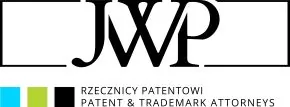- with readers working within the Healthcare industries
When working to market a product, you should consider how to protect it and how to avoid infringing others' intellectual property rights. It is worth thinking at the early stage of planning about how to effectively avoid infringements and respond to any attempted infringement of your area of exclusivity. You need to be aware of your options and strategically choose the best path for a given product. The principles of how to protect intellectual property rights are universal and also apply to entrepreneurs choosing to do business on the Internet.
Before START
First, the most important thing is to look at your product or service and get to know the tools that can help you effectively protect your intellectual and industrial property items.
In this article, we will focus mostly on trademarks.
A trademark may be any sign that helps to distinguish the goods of one enterprise from those of another enterprise and at the same time may be presented in a trademark register. Thus, a mark can be words, including second names, drawings or graphics, letters, a combination of letters or numbers, colours, packaging or even sounds.
A well-chosen trademark plays a significant role in developing a business strategy of an enterprise and, with regard to competitors, it is a powerful marketing tool helping a business succeed in the marketplace.
Step 1 – Search
To knowingly devise a strategy for protecting intellectual property in an enterprise, it is worth having a trademark search conducted. Even if the sign is developed with the utmost care, it cannot always function as a trademark. From a legal point of view, there is a number of prerequisites that a sign must meet to be registered and safely used in the trade. With the search of the sign being designed, it is possible to assess your chances of its registration, while avoiding collisions with already protected trademarks.
A trademark search is a search for and an analysis of prior trademarks identical or similar to the said sign, carried out by patent attorneys, in terms of the risks associated with applying for trademark registration and with trademark use. The search helps to check whether the entrepreneur who has already registered an identical or similar mark to designate identical or similar goods and services does not enjoy exclusive rights in this respect. If prior similar signs are found, it is possible to modify the mark itself or the list of goods and services in the application so as to increase your chances of obtaining protection and avoid a conflict when the product is already on the market. The use of specialised services provided by patent attorneys is recommended for that purpose.
When the search gives a positive result, or the entrepreneur decides that he is ready to face the risk indicated, it is possible to proceed to the next step – application.
STEP 2 – Application
First, we specify the scope of protection for the mark – we define it by indicating the goods or services for which the mark is to be used. For this purpose, it is necessary to assess what is to be offered using the mark, but also in what direction the business may develop. It is better and cheaper to file a trademark application also for the categories that may be introduced in the future, because once the application has been filed it will not be possible to extend the scope.
Another question to be answered when applying for trademark registration is where the goods or services are to be offered. A trademark is protected in a specific territory. One is always tempted to protect it globally, unfortunately for a starting business the cost may be too high too bear, although it is possible to adopt such a strategy. The most frequently chosen solution is to register a trademark at the national level in Poland or in the EU, the latter option provides you with uniform protection in all European Union countries.
Why register a mark? The registration provides the entrepreneur with a monopoly on the use of the sign in question and thus the right to prohibit other entities from using an identical or similar sign which is used to designate identical or similar goods/services if the use of such a sign could mislead an average consumer as to the origin of the goods. In other words, the question is whether the customer could be confused when purchasing the goods or link manufacturers with one another.
This is a very effective law – the registered trademark is protected from the filing date and the registration procedure at the Polish or EU Office takes approx. 4 months.
The protection right is granted for 10 years and can be extended.
STEP 3 – Monitoring
The registration rights obtained should be later "guarded." The Office does not notify of subsequent applications for trademarks which could be considered similar to ours. It is up to the entrepreneur to ensure that no one enters his area of protection. Turning a blind eye to infringements can lead to damaging consequences. IP law firms provide services of monitoring databases and informing clients about applications for similar or identical trademarks.
Step 4 – Checking whether the actions taken are legal
The next step is to learn how the entrepreneur's rights can be infringed and how the entrepreneur can unknowingly infringe someone else's rights.
On the Internet, it is often the case that an infringement occurs already at the time of website creation. Choosing an Internet domain name should be done with great caution. As part of trademark search, it is also possible to check whether the domain with a selected name exists. When registering domains, the "first come, first served" rule applies. The right to use the Internet domain name is not verified by the registrar in any way. Nevertheless, should the name chosen infringe another entity's rights to a trademark, the said entity has the right, in the first instance, to request for the use of the name to be discontinued and the profits gained or compensation for the unlawful use paid.
An infringement may also be committed by offering or selling goods which do not come from the trademark holder, but are nevertheless unlawfully marked with the trademark belonging to that entrepreneur. Such products may be of poorer quality, contain substances dangerous to the consumer or may fail to meet safety standards. The sale of non-original products may expose the entrepreneur to liability to the trademark holder.
Another element of business activity that can cause problems is the way products are presented as part of online sales. When downloading photographs and product descriptions from the manufacturer's website, one ought to make sure that the manufacturer authorises such activities or obtain his written consent. The use of the photos found on the Internet may expose the entrepreneur to liability for copyright infringement. It should be strongly emphasised that the belief that what is made available on the Internet can be freely copied and used in business activities is incorrect and such actions may expose the entrepreneur to liability, also the financial one.
The entrepreneur should regularly assess the activities carried out on the Internet. Nevertheless, when ordering a product that is to be sold later, it is recommended to verify the seller, the country of purchase and avoid buying, for example, on popular Chinese auction websites, the products specified as similar, almost the same. When presenting products, whether purchased from a wholesaler or manufactured by an entrepreneur, you should have their taken photos independently, unless you have an explicit, preferably written, consent to the use of photos from the Internet. Do not use a reference to or comparison with other goods using trademarks or names of companies. If the use of a trademark is required, a word mark rather than a figurative one should be chosen. The use of competitor names in Google Ads should also be avoided, since, according to judicial practice, such an action may be considered an act of unfair competition or an infringement of intellectual property rights.
Step 5 – Preventing infringements
Where the trademark rights held by the entrepreneur are infringed by someone using a trademark belonging to the entrepreneur in the name of an online domain, the entrepreneur may attempt to amicably resolve the matter, i.e., obtain rights to the domain by negotiating and concluding a contract. He may also go to court and seek arbitration. The Court of Arbitration for Internet Domains at the Polish Chamber of Information Technology and Telecommunications and the Court of Arbitration at the National Chamber of Commerce in Warsaw are competent for .pl domains.
In the event of infringement of trademark rights or copyrights to photos by publishing them without their author's consent, the right holder, in addition to amicable negotiations, may also pursue a civil action.
In both cases, the entrepreneur is entitled to, among others, assert, before common courts, claims for the discontinuance of unauthorised actions, the removal of the effects of unauthorised actions, the redress of damage on general terms or the payment of unjustifiably obtained profits.
Step 6 – Using brand protection programs
A noteworthy option for the entrepreneur to protect his rights is the support offered by the most popular online sales platforms for holders of registered intellectual property rights.
Some of the platforms make cooperation with them conditional upon proving that a given entity takes active steps to protect its developed intellectual property, i.e., it has registered trademarks or industrial designs.
Joining brand protection programs on such sales or auction platforms gives the entrepreneur the tools to, for example, report an unauthorised use of the trademark belonging to the entrepreneur and request the removal of a problematic listing or auction.
STEP 7 – Periodic review of rights
When you are active on the market, it is worth taking a look at your offer from time to time in terms of the effectiveness of the protection afforded and analyse the portfolio of industrial property rights. Perhaps it is necessary to secure the products in new territories, or maybe the original application was too broad and the list or territories could be reduced, or maybe there are new products or names that should be protected? You definitely need to remember to keep to the schedule of renewals or entrust this task to a specialised law firm.
The benefits of exclusive rights are very tangible – apart from ensuring exclusivity of use, they increase the company's prestige and value and are an excellent tool in your business strategy. Therefore, the assistance of lawyers specialising in industrial property law may be of enormous help when you take such important decisions.
The content of this article is intended to provide a general guide to the subject matter. Specialist advice should be sought about your specific circumstances.



